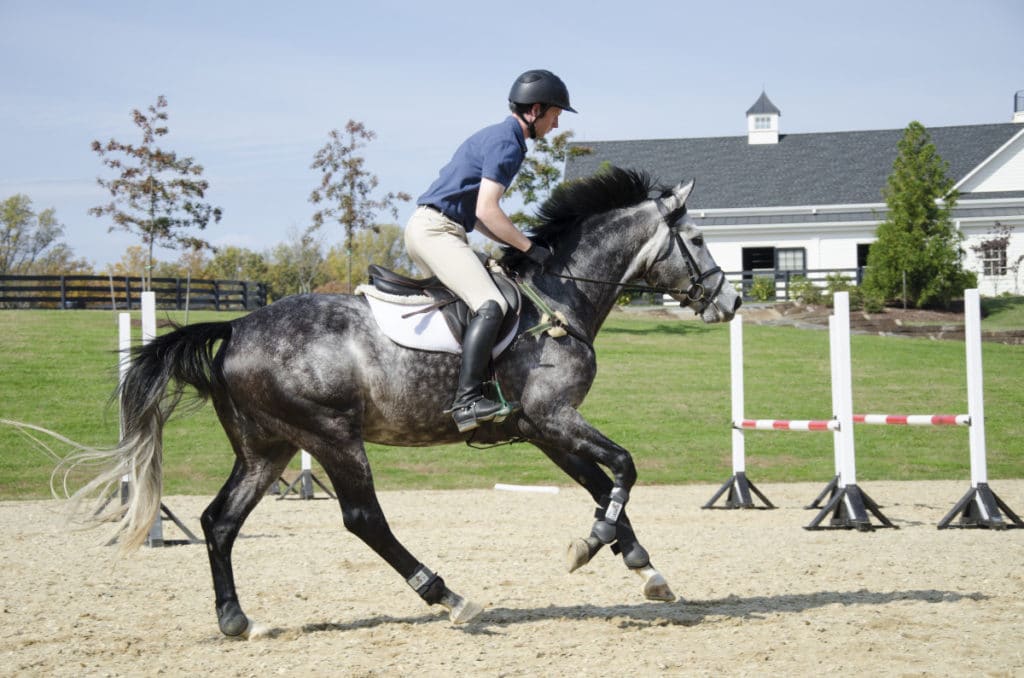A stride is simply defined as the distance between two successive steps of the same limb.
The canter mechanics, for a left-lead canter for example, is (1) right hind; (2) the diagonal pair of left hind and right fore; and (3) left fore, and so on and so forth. In order to feel the strides and to count them correctly, you have to feel the suspension phase that marks every stride. It’s pretty obvious when you’re on the horse. There should be a sensation that signals it to you, like a little jump for example. You should feel it clearly enough. There are other little clues that might help you. For example, when the horse breathes in synch with his strides, he will make a sound that will indicate each stride.
To help you count them, I have a little exercise with ground poles. Thanks to the poles, the horse will mark each stride and the suspension phase will turn into a small jump. It will help you feel every stride very clearly.
Exercise: For this exercise, place four or five poles three meters apart from each other, that you can count by walking three big steps. It may seem a little short because a stride is normally 3.50m on a show-jumping course and can go up to 4 or 5 meters in the cross-country. But in this particular case, we’re using ground poles. There’s nothing to jump, so the horses need less amplitude and we can keep a nice working canter.
Why do we need to count strides ?
We need to be able to count the strides on a jumping course, because there are lines of fences set on related distances. There can be between four and five strides depending on how you interpret it when you walk the course. That’s the most important thing. You have to really know the course: above a certain level, you cannot get a good round without planning what you’re going to do in the lines. That’s really the key point of show jumping technique.
Watch out for an easy mistake to make, when you count your strides in a line: you must not count « the landing phase » as a stride, which is what we tend to do. You have to force yourself to count “ZERO” in your mind when landing from the first jump of the line, and then start counting “ONE” once you have landed and started your first stride. In the previous exercise, you can also raise the first and last poles to have small obstacles, as if you had a line to jump.
Now that you’ve mastered the exercise with the poles, try to count the strides in the same way but without the poles on the ground and only keeping the obstacles. Now, you can vary: ask for three or four strides. Your horse must be very responsive in order to vary the amplitude of his stride. Try to extend the canter on the long sides of the arena and to collect it on the short sides.
To extend the canter, you just have to accompany the horse’s movement with your pelvis, your arms and hands.
To collect it, you have to sit a little heavier in your saddle, sit up tall and support the horse with your legs. And be careful not to block him with your hands.
Be careful, on a line with 3 strides: removing one stride can be dangerous. It would put your horse in a very flat balance, thus risking a bad jump and perhaps even a fall. It’s safer to remove a stride when you have a line that naturally requires five strides. Below that, it’s a bit risky. On the contrary, adding one isn’t a problem.
I recommend you do this exercise regularly at home. It will really help you to count your strides and help you when show jumping. And hopefully, make you win !
Are you finding it hard to count your strides ? What do you think of my exercise ? Leave me your comment here. See you soon !

